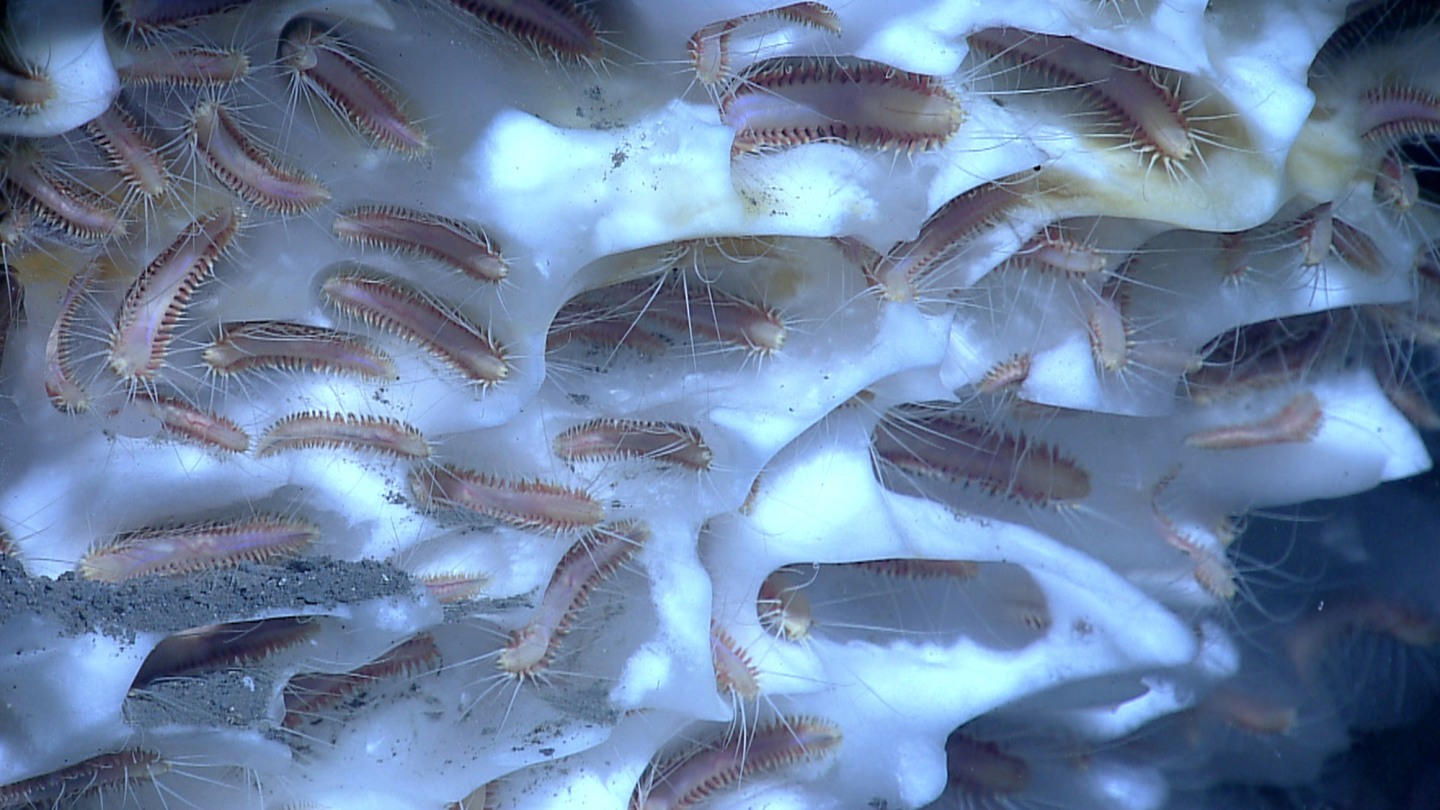
New research describes evidence that deep sea methane deposits change into gas more frequently than could be monitored previously and that a set of fossilized organisms has a unique ability to detect these releases.
A team of scientists led by a Brown University researcher has developed a new method for monitoring when deep sea methane deposits convert to gas and rise toward the seafloor in amounts that were previously too small to detect.
The research, published in Earth and Planetary Science Letters, shows that fossils of a single-cell organism called benthic foraminifera from the order Miliolida have a unique ability to serve as a resource for this monitoring because they can record both the location and timing of when crystalized methane goes through — even in small amounts — a process known as methane hydrate dissociation. This is when ice-like methane found beneath the seafloor transforms into gas and rises upward.
In the study, the researchers show through an analysis of 372 individual Miliolida fossils that these previously unrecorded dissociation events have been occurring in the Bay of Bengal in the northern Indian Ocean for the past 1.5 million years, but they were too small to detect through the usual signs of hydrate dissociation. The analysis shows the dissociation events have been largely driven by increasingly warming waters in the region.
Put together, the findings underscore the effects that climate change can have on ancient methane deposits and show that the hydrates transition from their solid phase ice-like to gas more often than previously understood.
“If you look at other drill sites around the area we studied, the records show only two methane dissociation events in the last million years” said Steven Clemens, a professor of geological sciences at Brown and lead author of the study. “Here, we see it pretty much everywhere when we look at these small scales, particularly during times when Earth’s climate was in a warm phase. It’s clear that methane is cycling a lot more rapidly and more often between its ice and dissolved phase than we could previously detect.”
The research team said the study is the first to document that three particular types of Miliolida foraminifera — Pyrgo spp., Quinqueloculina spp., and Spiroloculina spp. — are sensing small-scale dissociation events. Analysis of the other types of foraminifera the researchers collected during a 2015 expedition to the Indian Ocean showed that unlike the Miliolida, they do not detect these smaller-scale dissociation events.
Large dissociation events are typically easy to spot. They are preserved in the sediment record and detected by the formation and presence of large carbonate nodules and a chemosynthetic community of organisms that develop at sites of methane release.
“When you have a big dissolution event, methane bubbles up through the seafloor and chemosynthetic communities develop, similar to those discovered at mid-ocean ridges in the 1970’s. These communities include organisms from microbes all the way up to large clam beds,” Clemens said. “When these are found in the sediment record, you know hydrate dissociation has been very active. The question is: How can we detect such events that aren’t strong enough event to be expressed in terms of these precipitating carbonates and macrobiological communities? That’s what these little foraminifera seem to be doing. They are recording these shorter-term, less strong events.”
The team’s analysis shows that warming bottom waters are what is likely causing the dissociation, making the findings especially significant because of how rapidly Earth’s oceans are warming in recent years, Clemens said.
Methane hydrates are seen as an active research topic, often drawing wide scientific interest in developments surrounding them. There are numerous efforts assessing them as an energy resource and others as a contributor to greenhouse gases when released in sufficient quantities to make it from sediments into the atmosphere.
The researchers say that the small events they investigated are not necessarily a cause for concern because an array of organisms in the sediments and ocean waters feast on methane, devouring it before it reaches the atmosphere. If the warming happens too fast, however, biological communities may not be able to develop quickly enough to mediate it all. This would cause methane to be released to the atmosphere, resulting in accelerated greenhouse warming. This is most likely to take place in the shallow water of the arctic regions where waters are warming especially fast, the researchers said.
The research team stumbled into this discovery on methane hydrate dissociation largely by chance. They collected the cores they investigated while on a 2015 drilling expedition to the Bay of Bengal onboard the research vessel JOIDES Resolution. As they worked on the data for a study on past South Asian monsoons, the team noticed anomalies in certain species of benthic foraminifera but set it aside for further analysis until after they finished the study they originally set out to conduct.
The findings opened a number of questions the researchers hope to dig into one day, such as whether the Miliolida foraminifera incorporate the methane signal while they are alive and if they are recording such events not just in the sites they looked at but around the world.
